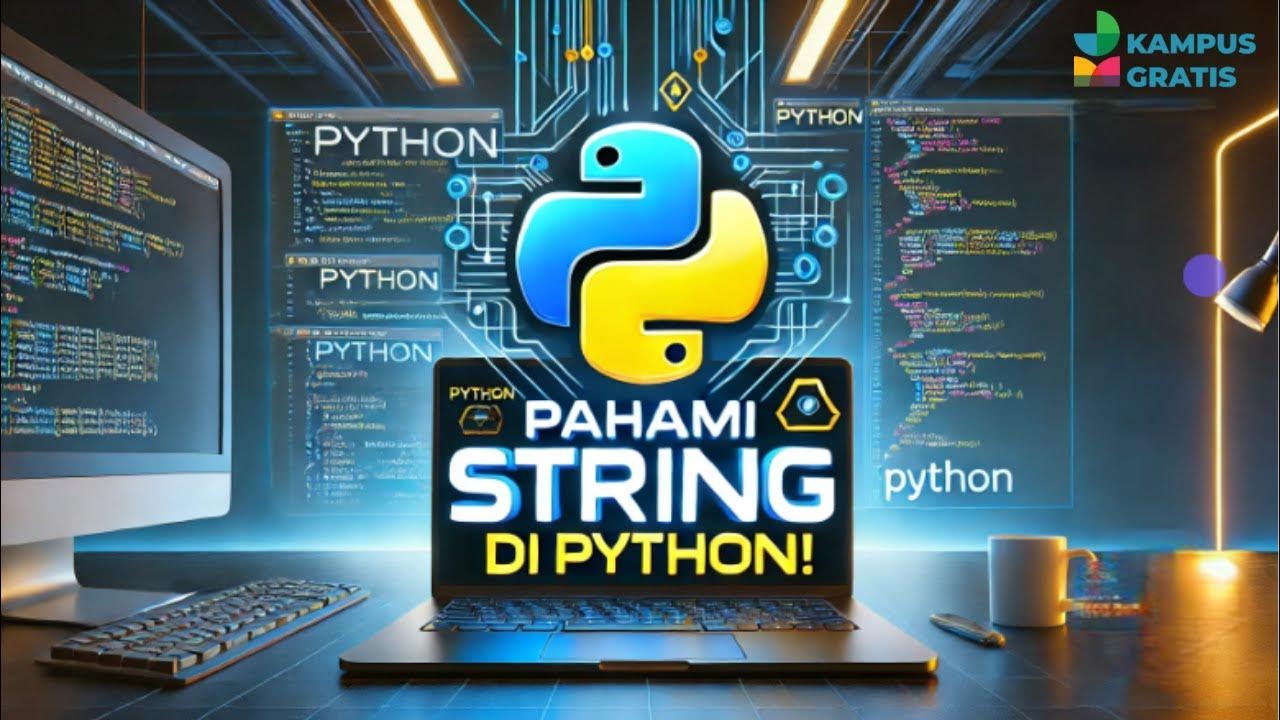Belajar Python [Dasar] - 16 - Operasi dan manipulasi string (part 1)
Summary
TLDRThis Python tutorial provides a comprehensive guide to string operations and manipulations, covering key concepts such as concatenation, calculating string length, substring checks, and string indexing. It demonstrates how to use basic operators and Python's built-in methods for manipulating strings, including length calculation, searching for characters, and slicing. The tutorial also explains advanced techniques like reversing strings with negative indexing, extracting specific character ranges, and using string methods like count and character codes. Ideal for Python beginners, this tutorial helps users master essential string handling skills for future programming projects.
Takeaways
- 😀 Concatenation of strings in Python can be done using the '+' operator, allowing you to join strings together easily.
- 😀 You can calculate the length of a string using the 'len()' function, which returns the number of characters in the string.
- 😀 Python provides a method to check if a substring exists within a string using the 'in' operator.
- 😀 String manipulation can involve checking for specific characters or substrings, and you can use conditional checks to determine their presence.
- 😀 When working with string indexes, Python allows you to access individual characters, starting from index 0. Negative indexing can be used to access characters from the end of the string.
- 😀 You can use slicing to extract substrings from a string by specifying a range of indices, with the syntax 'string[start:end]'.
- 😀 Repeating strings multiple times can be achieved using the '*' operator, enabling easy string repetition.
- 😀 Python allows for the use of methods like 'count()' to count occurrences of a specific character or substring within a string.
- 😀 Methods such as 'upper()' and 'lower()' allow you to manipulate the case of a string, transforming it to uppercase or lowercase, respectively.
- 😀 The script also introduces string manipulation techniques using built-in methods, which are often more efficient and powerful than basic operators.
- 😀 The tutorial emphasizes understanding string operations and manipulation as essential skills for future Python programming tasks.
Q & A
What is the main topic of this tutorial?
-The tutorial focuses on operations and manipulations of strings in Python, explaining various string-related operators and methods.
What is string concatenation, and how is it done in Python?
-String concatenation is the process of joining two or more strings together. In Python, this can be done using the '+' operator, as shown with the example of combining first name, middle name, and last name.
How does the 'len()' function work in Python?
-'len()' is a built-in function that returns the length of a string, meaning it counts the number of characters in a string. For example, 'len('Ucup')' would return 4.
What is the purpose of the 'in' operator when working with strings?
-The 'in' operator checks if a substring exists within a string. It returns a Boolean value: 'True' if the substring is found, otherwise 'False'. For example, 'd' in 'Ucup the Farm' returns 'True'.
How does Python handle case sensitivity with the 'in' operator?
-Python's 'in' operator is case-sensitive, meaning it distinguishes between uppercase and lowercase letters. For instance, 'd' in 'Ucup' would return 'False' because the letter 'd' is not present in the string with the same case.
What is the difference between 'not in' and 'in' operators?
-'not in' is the negation of 'in'. It checks if a substring does not exist in a string, returning 'True' if the substring is absent. For example, 'd' not in 'Ucup' returns 'True'.
What does the 'print()' function do when displaying strings?
-The 'print()' function is used to output the value of a string or any other variable to the console. It allows you to view the result of string operations such as concatenation or length checking.
What is string indexing in Python, and how is it used?
-String indexing allows you to access individual characters within a string. Indexes in Python start at 0, so the first character is at index 0, the second at index 1, and so on. Negative indexes start from the end of the string.
What happens when you use negative indexing in Python?
-Negative indexing in Python allows you to access characters from the end of the string. For example, '-1' refers to the last character of the string, '-2' to the second-to-last, and so on.
How do you extract a substring from a string in Python?
-A substring can be extracted using slicing. The syntax is 'string[start:end]', where 'start' is the index where slicing begins, and 'end' is where it stops (excluding the end index). For example, 'Ucup the Farm'[0:4] returns 'Ucup'.
What is the purpose of the 'chr()' and 'ord()' functions in Python?
-The 'chr()' function converts an ASCII value (integer) into its corresponding character, while 'ord()' does the opposite, converting a character into its ASCII value. For example, 'chr(65)' returns 'A', and 'ord('A')' returns 65.
What is the significance of methods like 'count()' in string manipulation?
-Methods like 'count()' in Python are used to perform specific operations on strings, such as counting the occurrences of a substring. For example, 'Ucup the Farm'.count('the') returns 1, indicating that the substring 'the' appears once.
Outlines

このセクションは有料ユーザー限定です。 アクセスするには、アップグレードをお願いします。
今すぐアップグレードMindmap

このセクションは有料ユーザー限定です。 アクセスするには、アップグレードをお願いします。
今すぐアップグレードKeywords

このセクションは有料ユーザー限定です。 アクセスするには、アップグレードをお願いします。
今すぐアップグレードHighlights

このセクションは有料ユーザー限定です。 アクセスするには、アップグレードをお願いします。
今すぐアップグレードTranscripts

このセクションは有料ユーザー限定です。 アクセスするには、アップグレードをお願いします。
今すぐアップグレード5.0 / 5 (0 votes)






